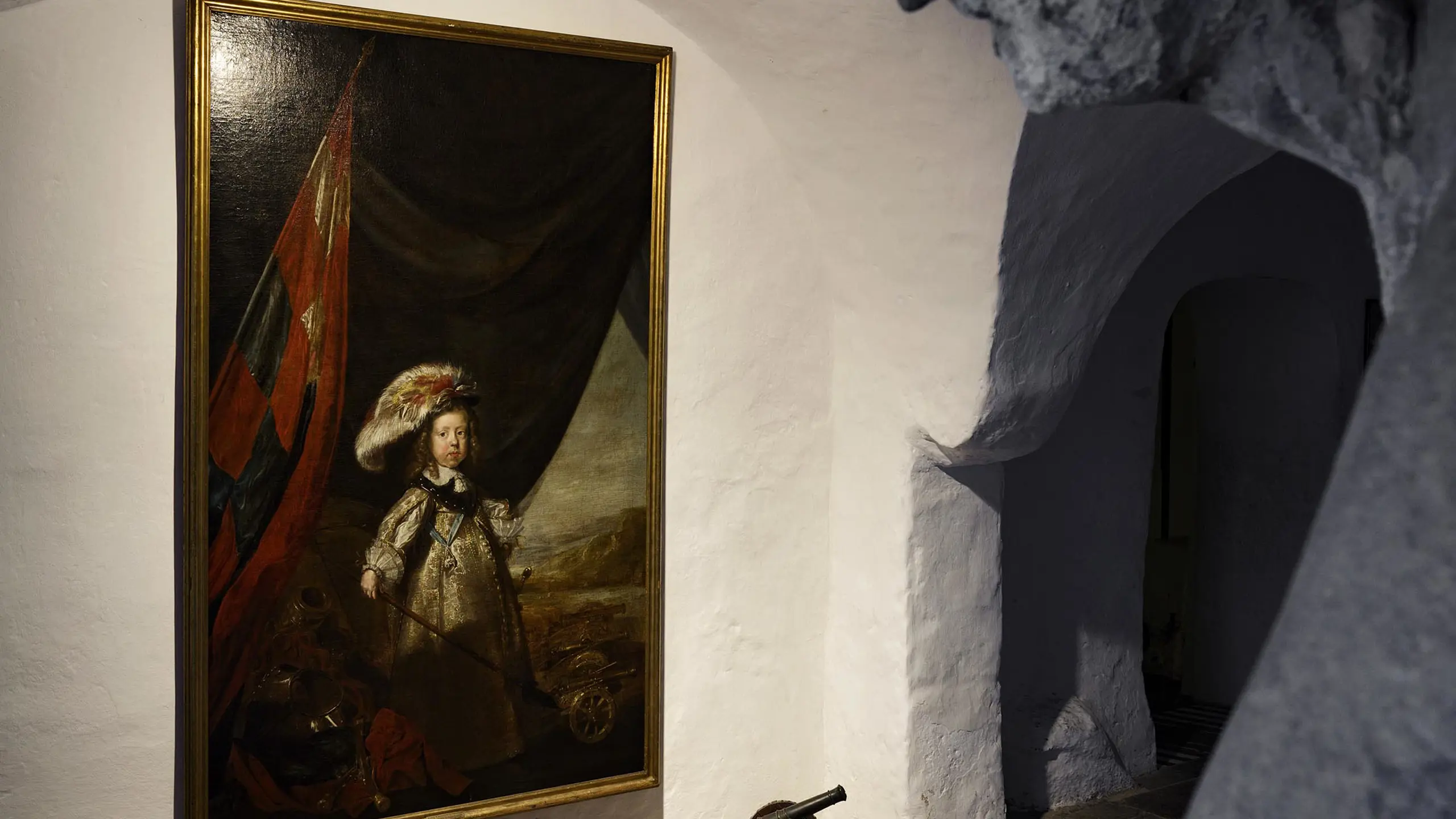Basement Entrance (room A)
The Treasury here at Rosenborg Castle is located in the basement. To enter the basement, you need to go outside the castle and down the stairs via the gate in the Stair Turret. The basement steps lead down to the north end of the basement, which was added when the castle was extended in 1613–17.

The descent to the Treasury
Originally, the basement was a vaulted hall with four central sandstone pillars. It was divided into the three rooms you see today when Christian V placed the State Archives, the precursor of the National Archives, here at Rosenborg, in 1681. The archives held the kingdom’s treaties with other powers and other secret documents. In 1720, the archives were moved, and after the demolition of Copenhagen Castle in Slot, in 1731, the royal wine cellar was moved here instead.
As you descend the stairs, on your left, you can see the large painting of the just four-year-old Christian V. The painting, by Karel van Mander, dates from 1650 and shows the young Prince as the newly elected successor to the throne. The Prince is dressed as an adult general and is surrounded by military attributes, including salute guns, some of which are identical to the ones on display in front of the painting.
The reason why the four-year-old prince is described as the ‘newly elected’ successor to the throne is that the absolute monarchy was not introduced until January 1661. This meant that the son of The King had to be elected by the Rigsrådet (the Council of the Realm) to be officially proclaimed as the successor to the throne. There are no examples of The King’s eldest son not being elected. However, there are many examples of numerous demands from the nobility in return. These demands were written into the so-called coronation charters that The King had to sign when he acceded to the throne.
Behind the iron door at the back of the room, with the inscription of the year 1681, Christian V kept the cash supply of the realm. This room is not open to the public, but we can reveal that the cash supply of the realm are no longer kept here.
previous room <- | -> next room
Objects in the room
If you are at the museum, you can admire the fascinating objects in the room and read more about them below.
The descriptions are brief and generally do not include images. They are intended as an added resource if you would like more detailed information about an item, such as who made it, its origin and its meaning.